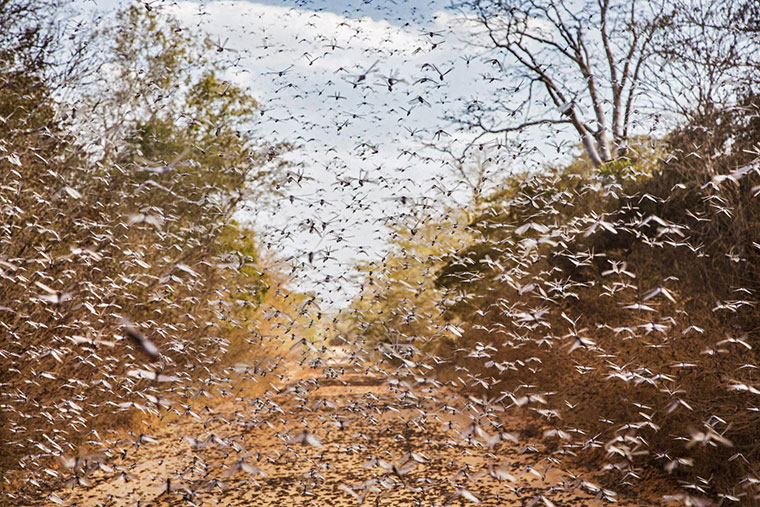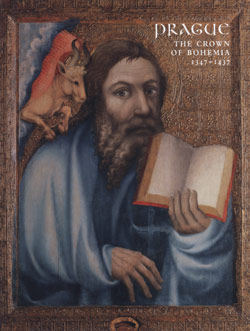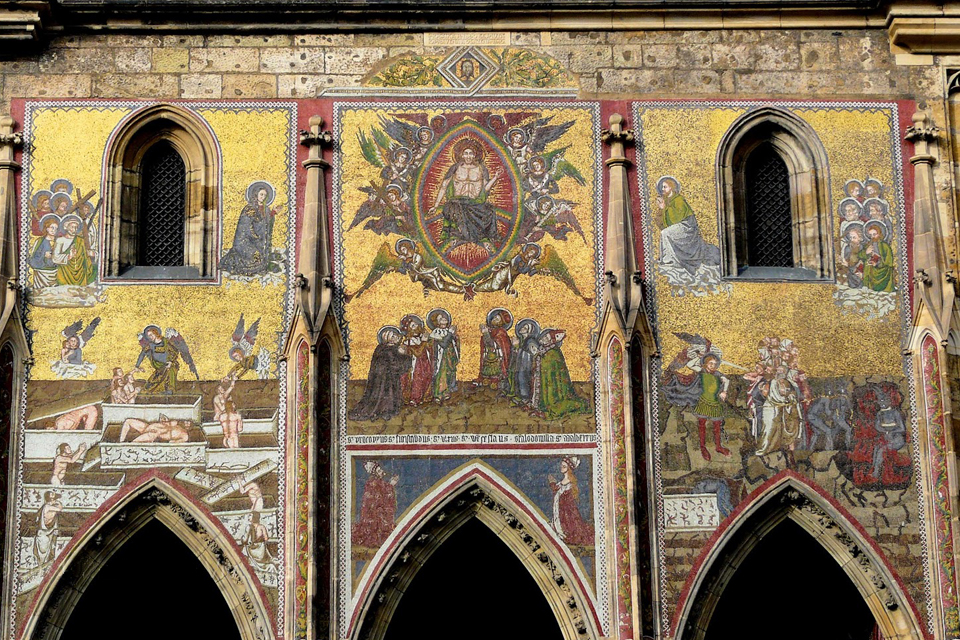Charles IV was an extremely sensual person possessing a creative and curious mind. A vast number of sources witness to this remarkable leader with a vision of what might be brought about, which was larger than life
Next morning as our brother-in-law had invited us for breakfast, a soldier came and woke us with the words: Lord, get up, the Day of Judgement has arrived; the whole world is filled with locusts. At this, we rose, climbed a horse and rode to Pulkau, as we wished to see the end. After seven miles, we were able to observe them. We could not see the width of the swarm, their chirping was thunderous and their wings seemed as if marked by black lettering. They seemed like a thick snowstorm and we could no longer see the sun; and they spread a most horrible stench. Soon, they divided into two swarms, one for Bayern and another for Franken, and yet another for Lombardy, and the rest covered the whole earth. They multiplied very quickly as a couple could generate twenty inside a night. They were small, but grew very quickly. They were around for three years. (28th of July 1338)
(From: Vita Caroli Quarti (own translation.)

There are a number of reasons why this vignette is worthy of attention. On one hand it tells the story of a young man bent on experiencing on first hand an event, which his surroundings immediately registers as one of those predicted in the Revelation. Here is no shyness detectable even if the event by all accounts promises to be earth-shattering. Up on his horse he gallops for more than 26 km along the meandering valley from Znojmo to Pulkau in order to see for himself. We know the incident made a profound impression on him because he described it twelve years later in detail in his autobiography. But he also ends this description with a curious laconic remark: They were around for three years, meaning this was not the biblical event since this was predicted to last for only five months!
We may conclude that Charles by his own account was a bold and well-learned man with a particular sensual aptitude and a curious mind. Fit for a regal fight, we may add.
In this, he obviously took part with both audacity and creative political talent, juggling a vast network of contacts through the wielding of wars and the forging of marriage alliances and friendships throughout most of Europe.
However, what was perhaps even more remarkable than his political acumen was the way in which he used his sensual and creative mind to enlist a number of remarkable artists to forge an artistic programme underwriting his political and dynastic visions. In recent years this have resulted in a number of monographs and detailed studies opening up for a better understanding of a man, who was perhaps more like a member of the global elite of the 21st century than the national hero of the Czechs.
Visual Programme
It is this visual and artistic programme – obviously forged to create a particular image – which is at the centre of the exhibitions in first Prague and then Nuremberg, mounted in 2016 to celebrate the 700-anniversary of his birth.
With a focus on his portraits, his crowns, his building projects, his collections of relics and his artistic legacy we get a fine introduction to how the man thought of himself; and a plethora of bits and pieces allowing us to get behind the façade of a peculiar and fascinating personality of the 14th century. Not often, we have this possibility.
Read more about:
The Exhibitions in Prague and Nuremberg
The City of Prague – the castle, the new town, the bridge, the wall
King Charles as Sacral King and The Relics
The Treasures (coming up)
The Castles – Montecarlo (near Lucca) Karlštejn, Castle In Lauf, Kašperk,…. (more coming up)
SOURCES:
 Prague, The Crown of Bohemia, 1347–1437
Prague, The Crown of Bohemia, 1347–1437
Ed. by Barbara DrakeBoehm and Jiri Fajt, with contributions by Robert Suckdale, Paul Crossle, Zoë Opacic, Vivian B. Mann, Gerhard Schmidt, Jan Royt, and Erno Marosi (2005)
Metropolitan museum of art (New York, N.Y.) 2005
FEATURED PHOTO:
The Last Judgement at the Golden Gate into the Cathedral of St. Vitus in Prague. Below Charles IV and his queen are seen praying. Source: Wikipedia
